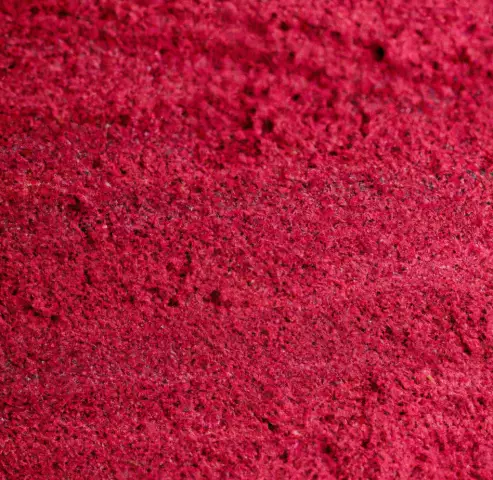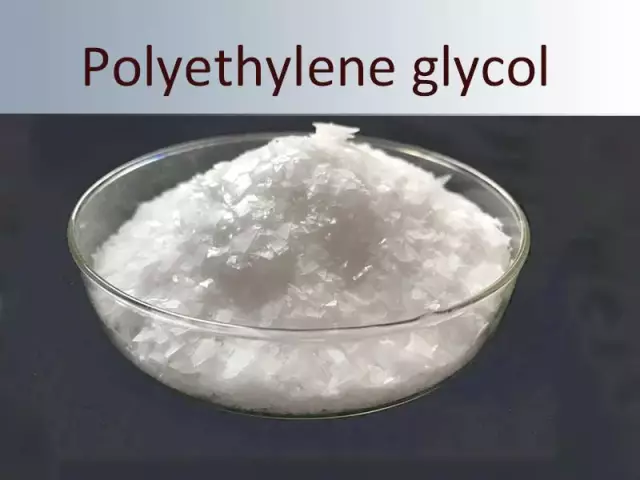- Author Rachel Wainwright [email protected].
- Public 2023-12-15 07:39.
- Last modified 2025-11-02 20:14.
Carmine

Carmine (E120 dye) is a reddish-purple food additive. The color of carmine depends on the acidity of the medium. In an acidic environment, the color of carmine will be orange. In a neutral environment, the dye will turn red, and in an alkaline environment, the carmine will turn purple.
Carmine is the most stable of all dyes in its group. It is insensitive to oxidation, heat treatment, and sunlight.
Carmine's story
Even in ancient times, carmine was worth more than gold. Europeans first learned about it in 1518. At that time, the dye was brought to Europe by the Spanish conquistadors. Residents of Latin America traditionally used this substance for dyeing yarn and fabrics, and in Armenia this natural dye has long been used to paint miniatures on parchment. The mass production of carmine began in the 90s. It was then that this compound began to be used in the food industry as a dye.
Obtaining carmine dye
Carminic acid, from which the supplement E120 is made, is obtained in a very original way - from the bodies of female cochineal aphids. These insects live on the Canary Islands, America, Peru and parasitize on some types of shrubs and trees.
Carminic acid is a pigment in the eggs and abdomen of cochineal females. The dye is obtained by precipitation of carminic acid in the presence of calcium and aluminum cations. The dye extract extracted from the bodies of insects may contain 15 to 20% carminic acid.

The females turn red before the insects lay their eggs. It is during this period that the scale insects are collected, their shells are cleaned of viscera, dried and treated with a solution of sodium carbonate or ammonia. The purified water-soluble extract of carmine is called cochineal. More than one and a half million female cochineal aphids are required to obtain one kilogram of the dye. Therefore, it is more expensive than other similar nutritional supplements.
Carmine application
The share of carmine in the natural dyes market is 11%. The dye is mainly used in fish and meat processing industries, in the confectionery and dairy industries, for the manufacture of sauces, sausages, glaze, ketchup, juices and jellies. It gives delicacies and sausages a natural reddish tint. This natural dye allows you to improve the presentation of products and improve the degree of coloring.
Carmine dye is used in the perfumery and cosmetic industries. Carmine is also used for staining histological preparations.
Carmine harm
This dye is especially dangerous for human health with individual intolerance to all synthetic and natural dyes. The harm from carmine can manifest as a severe allergic reaction.
Found a mistake in the text? Select it and press Ctrl + Enter.






